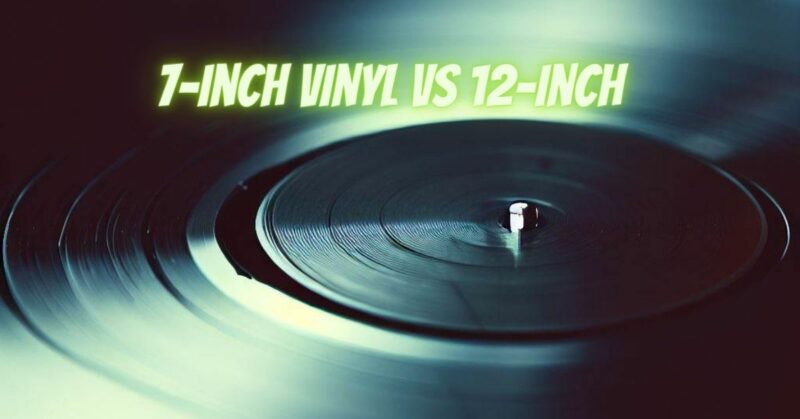Vinyl records have made a remarkable resurgence in recent years, captivating music enthusiasts with their warm sound and nostalgic appeal. Two popular formats of vinyl records are the 7-inch and 12-inch vinyls. Despite sharing the same analog charm, these formats offer distinct advantages and unique experiences for music lovers. In this article, we will delve into the key differences between the 7-inch and 12-inch vinyl records, exploring their history, physical attributes, audio quality, and practical uses.
- Historical Background
The vinyl record was first introduced by Columbia Records in 1948, initially as a 10-inch format. Later, the 12-inch vinyl emerged in the early 1950s, quickly becoming the standard for albums due to its extended playing time and improved sound quality. In contrast, the 7-inch vinyl, commonly known as a single or EP (Extended Play), was introduced as a more affordable and compact option.
- Physical Attributes
The most apparent distinction between the two vinyl formats lies in their size. The 7-inch vinyl has a diameter of 7 inches (approximately 17.5 cm), while the 12-inch vinyl has a diameter of 12 inches (approximately 30 cm). Due to its smaller size, the 7-inch vinyl typically contains one to three tracks on each side, whereas the 12-inch vinyl can hold up to 22 minutes per side, allowing for longer compositions and increased audio fidelity.
- Audio Quality
When it comes to audio quality, the 12-inch vinyl generally reigns supreme. Its larger surface area permits grooves to be spaced farther apart, allowing for more detailed audio reproduction and better dynamic range. Consequently, 12-inch vinyl records tend to offer a more immersive and rich listening experience compared to their 7-inch counterparts. However, it is important to note that factors like mastering, pressing quality, and vinyl material also significantly influence the overall sound.
- Practical Uses
Each vinyl format serves distinct purposes within the music industry. 7-inch vinyl records are often used for single releases, promotional purposes, or limited edition collectors’ items. They are more cost-effective to produce and are a popular choice for independent artists and bands looking to share individual tracks or special releases with their fans. On the other hand, 12-inch vinyl records are the go-to format for full-length albums and extended compositions. Their ability to accommodate more music per side makes them suitable for immersive listening experiences and allows artists to craft their albums thoughtfully.
- Collectability and Market Value
Both 7-inch and 12-inch vinyl records hold significant value in the collectors’ market, but the factors that drive their collectability can vary. Limited edition 7-inch singles and EPs from iconic artists or rare releases can command high prices due to their scarcity and historical significance. Conversely, 12-inch vinyl records of classic albums, particularly from the vinyl era’s heyday, often fetch high prices in pristine condition. Additionally, special editions and colored variants of 12-inch records can also attract collectors’ attention.
- Portability and Storage
One practical advantage of 7-inch vinyl records is their portability and ease of storage. Their smaller size makes them more convenient to carry around and store in smaller collections or record boxes. On the other hand, 12-inch vinyl records require more space for storage and are less portable due to their size and weight.
In conclusion, both 7-inch and 12-inch vinyl records have their unique appeal and serve different purposes in the world of music. The 7-inch vinyl is perfect for compact single releases and limited editions, while the 12-inch vinyl provides a more immersive listening experience for full albums and extended compositions. Ultimately, the choice between the two formats comes down to personal preferences, collecting goals, and the desire for a distinct listening experience that only vinyl records can offer.


